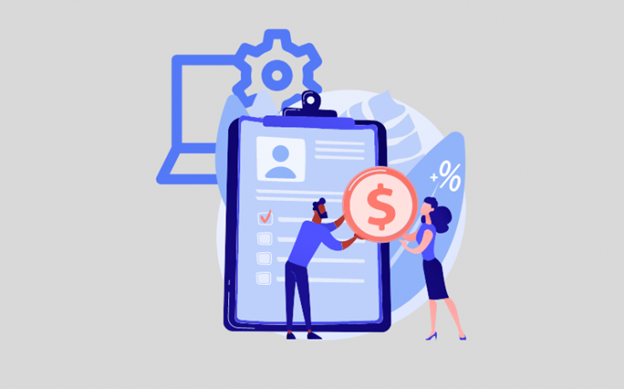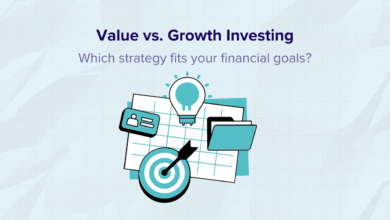How Can Financial Institutions Digitize Their Loan Origination Systems?

In the rapidly evolving and highly competitive lending industry, financial institutions are actively seeking innovative solutions to streamline processes, boost operational efficiency, and deliver outstanding customer experiences. One widely embraced solution is the loan origination system (LOS). While interpretations of the term may vary among industry professionals, it generally refers to a suite of software solutions automating workflows related to originating commercial loans in financial institutions. The LOS has become an essential powerhouse, uniquely capable of ensuring high accuracy, enforcing regulatory compliance, facilitating faster decision-making, and adeptly managing complexities in risk management. With these critical objectives in mind, the LOS emerges as an indispensable ally, driving growth and enhancing the borrower experience.
This article delves into the LOS, examining its key features, advantages, and the transformative role it plays in the lending sector. Furthermore, we’ll explore how OutSystems, a leading low-code development platform, empowers organizations to fully leverage the potential of LOS, leading to exceptional outcomes.
What is a Loan Origination System (LOS)?
A loan origination system (LOS) is a software platform designed to automate and oversee the loan origination process for financial institutions, including banks, credit unions, and mortgage lenders. It functions as a centralized hub, managing all aspects of loan applications, approvals, and disbursements.
The LOS streamlines and expedites the lending process by offering a digital framework for gathering and analyzing borrower information, evaluating creditworthiness, establishing loan terms, and managing documents. This system replaces traditional manual and paper-based procedures with efficient workflows and standardized processes, resulting in enhanced operational efficiency and decreased processing time.
The Seven Steps of a Loan Origination Process
The standard loan origination process for various lending institutions like banks, credit unions, and micro-finance institutions involves seven steps. These include qualification, documentation, application processing, underwriting, credit decision, quality check, and loan approval & disbursement. Let’s explore each of these steps in detail below:
1. Borrower Pre-Qualification
In the initial step of the loan origination process, the borrower provides all their information to the lending institution. This includes details such as identity, address, current employment, income, payment history, tax returns, expenses, loan amount, and purpose.
2. Documentation
During this second step, the borrower is required to provide more detailed information and fill out an application form. They must also submit relevant documents related to financial status, employment, income, and other credentials. Submission can occur either offline or online through the lender’s web portal or mobile application.
3. Processing
Once the comprehensive information is received, the lending institution’s credit department reviews it for accuracy, authenticity, and completeness. This step involves the credit analyst validating the information and running algorithm-based analyses to assess the borrower’s ability to repay the loan.
4. Underwriting
A critical stage, underwriting, evaluates the borrower’s creditworthiness and determines whether to approve or deny the loan, along with the applicable loan amount. Factors considered include the borrower’s financial situation, credit history, debt-to-income ratio, repayment capacity, and overall risks associated with loan approval.
5. Credit Decision
Credit analysts decide to approve or deny the loan request in this step. If further details are required, they are sent back to the originator. Even if the loan is denied, it can be reconsidered with adjustments to the loan amount, tenure, or interest rates. The final decision is communicated at this stage.
6. Quality Check
This stage involves assessing the accuracy and compliance of the loan application with various regulations and internal policies. Quality checking is crucial before the final approval and disbursement of the loan.
7. Loan Approval & Disbursement
Upon mutual agreement on the loan terms and conditions outlined in the loan document, the approved loan amount is disbursed to the borrower. Disbursement can occur through a cheque, direct bank transfer, or alternative channels like digital wallets or cards.
This entire process typically takes 40-60 days or more, depending on various factors. Due to the extensive paperwork involved, it requires significant manual effort and time, from origination to final processing.
Why do Banks need to establish a Loan Application Processing System?
Banks should set up a loan origination system (LOS) to deal with the challenges of manual application processing. Tasks such as checking application details, deciding on loan terms, and preparing documents can take up a lot of time and resources. Banks can make these processes automatic by using a LOS, which saves time and resources while increasing the number of applications they can process.One big advantage of a LOS is that it ensures loan applications are handled accurately and consistently. When done manually, there’s a higher chance of errors and inconsistencies, which can lead to financial losses and harm the bank’s reputation. A LOS makes the application handling process more efficient, reducing the possibility of mistakes and ensuring a smoother and more dependable experience for both the bank and its customers.
A more efficient loan origination process improves customer satisfaction as clients go through a smoother and more efficient application procedure. Additionally, a LOS helps with better risk management, allowing banks to evaluate and lessen risks related to loan approvals.
What Are the Features of a Loan Origination Platform?
A good loan origination platform should have features that make the loan application and approval process easier, more efficient, and better for decision-making. Here are some important features to look for:
- Automated application processing: The platform needs to handle tasks like entering data, checking documents, and reviewing applications automatically. This helps reduce mistakes, save time, and make the lending process smoother.
- Customization and flexibility: A powerful loan origination platform should let lenders adjust it to fit their specific needs. This includes customizing workflows, decision rules, and interfaces to match what works best for them.
- Integrated data and document management: The platform should connect well with data sources and other systems. This helps lenders access and analyze the right information during the loan process. It should also handle documents securely, making it easy to store, find, and share them.
- Compliance and risk management: A good platform helps lenders follow rules and manage risks. It should have checks for compliance, automated credit scoring, and tools to assess risk. The platform should also support reporting and keep a record of actions to be transparent and accountable.
- Collaboration and communication tools: The platform should help everyone involved in the loan process communicate easily. This includes features like real-time updates, messaging, and task assignment to make teamwork smoother.
- Analytics and reporting: A good platform should provide useful insights through dashboards and reports. This helps lenders make decisions based on data and find areas to improve the loan process.
- Scalability and integration: The platform should be able to grow with the lender’s business needs. It should also connect easily with other systems and tools, like credit bureaus and fraud detection, to make operations more efficient.
- Mobile accessibility: In today’s world where many people use mobile phones, it’s important for lenders to have a platform that allows real-time access to loan status. This is crucial, especially in auto sales, where information like vehicle price, interest rate, terms, and loan status are important. This feature ensures everyone involved stays informed for effective decision-making.
Leverage and LOS accelerator to start accepting loan applications quickly
The global market for loan origination and management, valued at $1.9 billion in 2021, is projected to grow to $3.3 billion by 2030, with a 14.7% annual growth rate. Many reports highlight the desire of lending institutions to use digital loan origination systems to simplify the process. Lenders typically seek tools with features like custom automated workflows, automated checks & underwriting, identity verification, secure storage of loan files and borrower details, and compliance management.
However, traditional LOS processes face limitations due to outdated systems, isolated data, lack of data-driven decision-making, slow and cumbersome loan origination processes, and differing compliance and regulations. While some lenders may have a digital LOS in place, it lacks the agility, scalability, and adaptability needed and only acts as basic software. To keep up with today’s competitive environment, lenders need a technology that is easy to scale, modify, and adjust, considers custom workflows, and ensures compliance, data security, and integrity.
1. Faster processing times:
To tackle long processing durations, financial institutions can use advanced digital tools to automate various stages of the loan origination process. This includes employing machine learning algorithms for quicker credit assessments, digitizing document submission and verification, and analyzing data in real-time to shorten the overall time needed for loan approval and disbursement.
2. Efficient loan origination workflows:
To enhance efficiency, financial institutions can adopt centralized loan origination systems that provide a complete view of borrower and stakeholder activities. These systems automate communication, eliminate duplicate borrower records, and facilitate seamless collaboration among stakeholders. A well-organized workflow management system ensures a smooth and error-free process from pre-qualification to loan funding.
3. Adaptive compliance and regulatory solutions:
To address compliance challenges, institutions can invest in flexible digital loan origination systems that allow easy configuration of compliance rules based on region-specific regulations. These systems should also offer automated compliance checks, document management, and customizable underwriting criteria to stay compliant with evolving regulatory requirements.
4. Comprehensive automation throughout the loan origination process:
Automation is crucial to address manual inefficiencies in the loan origination process. Financial institutions can implement end-to-end automation solutions covering tasks like data entry, document processing, credit scoring, and reporting. By reducing manual intervention, these solutions enhance operational efficiency, minimize errors, and ensure consistent compliance with regulatory checks.
5. Resource management and scalability:
To overcome capacity constraints, lending institutions can consider outsourcing non-core functions or investing in scalable cloud-based loan origination platforms. This allows flexible resource allocation based on market demands. Partnering with third-party service providers for routine maintenance and support can also free up internal resources for strategic initiatives.
6. Enhancing borrower experience:
Delivering a seamless borrower experience can be achieved by offering user-friendly, mobile-responsive loan application interfaces. Using data analytics and AI-driven personalization, lending institutions can tailor loan offerings to individual borrower needs. Clear and transparent communication channels, including chatbots and digital support, provide borrowers with timely assistance, making the overall experience fast, convenient, and customer-centric.
Building a robust loan origination system with OutSystems low-code
As we consider the challenges faced by lending institutions, the question that arises is, “how can we create a strong loan origination system that meets the goals of efficient lending operations and an excellent borrower experience?” The solution is to establish a loan origination system (LOS) supported by the capabilities of OutSystems’ high-performance low-code.
Lending institutions require a loan origination system that speeds up the loan application and approval process, improves borrower experiences, ensures regulatory compliance, enhances risk assessment, and allows for customization. Developing a loan origination system on OutSystems not only helps achieve these objectives, but also forms the basis of a secure, scalable, and flexible loan application and approval process.
Here, we explore the six ways in which OutSystems low-code assists in rapidly building a robust lending platform for the future.
1. Develop, extend, and scale your loan origination system
The OutSystems low-code platform, supported by OutSystems.AI, accelerates application development by up to 50%, leading to proportional cost reductions. This is highly beneficial for banks and financial institutions aiming to create a tailored loan origination system, enhance its functionalities, swiftly introduce new features, and address issues with minimal coding requirements. Citizen developers can easily implement upgrades and deploy new features using OutSystems’ visual development approach and drag-and-drop capabilities, resulting in the creation of dynamic and robust banking applications.
- AI: OutSystems.AI encompasses a set of artificial intelligence (AI) tools designed to enhance the efficiency and precision of loan origination systems. For instance, it can automate tasks like document categorization and risk evaluation.
- OutSystems Forge: OutSystems Forge serves as a marketplace where developers can discover and download third-party components to extend and customize OutSystems applications. Various components available on OutSystems Forge can enhance the functionality of a loan origination system, including credit scoring, fraud detection, and loan servicing.
- OutSystems support: OutSystems provides an array of support services to aid lenders in the development and deployment of loan origination systems, including training, consulting, and maintenance.
- OutSystems Sentry: OutSystems offers comprehensive security features tailored to the specific needs of lenders. With OutSystems Sentry, lenders can confidently build and manage applications while safeguarding sensitive financial data. The platform delivers robust security measures, risk management capabilities, and monitoring, making it suitable for banks and organizations handling critical customer information. OutSystems Sentry ensures a secure and compliant low-code cloud platform for lenders.
Furthermore, lending institutions can easily integrate their LOS with CRMs, credit bureaus, and anti-money laundering (AML) checks, thanks to the OutSystems TrueChange engine.
2. Automate simple to complex workflows
Loan Origination Systems (LOS) involve intricate processes, such as handling applications, conducting credit checks, verifying documents, and approving requests. OutSystems provides tools to design and automate these workflows, simplifying operational tasks.
3. Regulatory compliance
Adhering to financial regulations is crucial, and OutSystems assists in maintaining compliance with industry-specific standards like Know Your Customer (KYC) and Anti-Money Laundering (AML) requirements.
4. Customization and flexibility
Loan Origination Systems often have distinct business processes. OutSystems’ flexibility allows customization to meet specific needs, facilitating quick responses to market changes and regulatory mandates.
5. User experience
OutSystems excels in helping organizations create modern, user-friendly interfaces. This is crucial for efficient loan application processing and a positive user experience for both customers and internal users.
6. Scalability & security
LOS systems need to handle varying workloads, especially during peak times. OutSystems ensures scalability through horizontal scaling, allowing organizations to add server instances as needed. It also prioritizes security with features like authentication, authorization, encryption, and role-based access control.
7. Integration capabilities
LOS systems often require integration with various sources. OutSystems provides pre-built connectors and an extensible integration framework, making it easier to connect with external systems.
8. Mobile access
In today’s mobile-centric world, mobile access is crucial. OutSystems enables concurrent development of mobile and web applications for LOS, ensuring accessibility on various devices for both customers and employees, enhancing convenience and catering to a broader user base.
Loan origination system use case with OutSystems
A major financial institution encountered issues with their traditional loan origination process, which was manual, time-consuming, and prone to errors. The paper-based system led to inefficiencies, delayed processing, and a subpar customer experience. To address these challenges, they opted for OutSystems, a user-friendly low-code platform, to simplify their loan origination process.
Utilizing OutSystems’ powerful features, they developed a customized Loan Origination System (LOS) tailored to their needs. The LOS automated various stages of the loan origination process, including application evaluation, approval, and document management. Using OutSystems’ visual development environment, they quickly created user-friendly interfaces and seamlessly integrated data from multiple sources, eliminating the need for manual paper processes.
The LOS now allows digital submission and processing of loan applications, significantly reducing processing times and improving operational efficiency. Real-time updates and notifications enable both customers and the internal team to track the progress of loan applications, enhancing transparency and providing a better customer experience. By adopting OutSystems’ low-code platform, they achieved a modern, streamlined, and secure loan origination system, positioning them as a leader in the competitive financial landscape.
Fasttrack loan origination with an OutSystems-based LOS accelerator
A Loan Origination System (LOS) is a beneficial tool for banks and credit unions aiming to simplify and improve their lending processes, covering interactions with borrowers from the start to the closing and funding of loans. With the use of digital loan origination systems, financial institutions can meet borrowers’ expectations for customer service and achieve quicker turnaround times.
Being a prominent OutSystems Partner, we have effectively supported numerous banking and financial organizations in optimizing their loan origination processes. Our certified experts are prepared to assist your institution in attaining similar results and making the most of the benefits offered by OutSystems.



